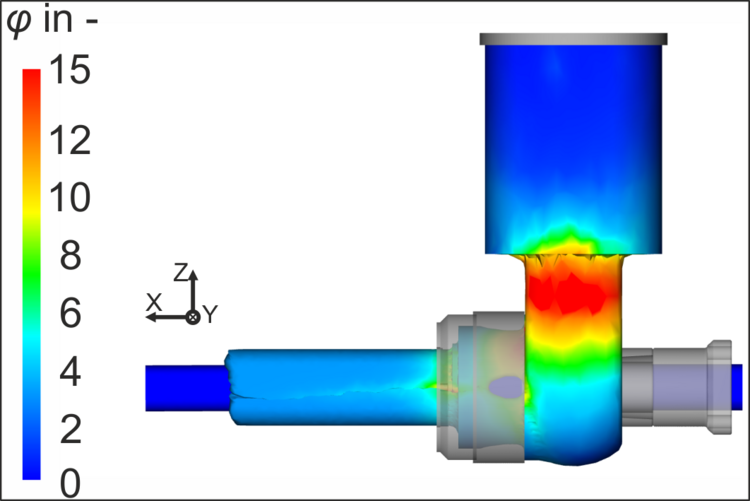Collaborative Research Centre 1153 "Process chain for the production of hybrid high-performance components through tailored forming"

| E-Mail: | fem@ifum.uni-hannover.de |
| Year: | 2019 |
| Funding: | German Research Foundation (DFG) – CRC 1153 TP A1 - Project number 252662854 |
The aim of the third funding period is to increase process reliability and the robustness of the tailored forming process chain for the production of hybrid components. For this purpose, the research focuses on process development and modelling, which are expanded to include a new emphasis on process monitoring.
On the one hand, the feasibility of producing longer Lateral Angular Co-Extrusion (LACE) profiles through block-on-block pressing is under investigation, with a focus on ensuring homogeneous properties as much as possible and on inline detection of transverse press seams (TPS) using non-destructive testing (NDT). The investigations primarily concentrate on the influence of the temperature-time regime of the overall process, including ancillary times, on the local bonding strength of the hybrid profile.
On the other hand, the aim is to enhance the functionality of LACE profiles through improved thermal conductivity and corrosion resistance. To achieve this, the LACE process is being further developed to manufacture thin-walled tubes from materials with low strength, such as copper and titanium grade 1.
Rotary friction welding (RFW) is intended to be utilised as an additional joining method to predict phase growth using existing FE models. FE models of RFW are employed to conduct various process parameter variations and define a process window within which bonding strength can be maximised. The goal is to identify an RFW process window that allows for setting specific phase seam widths, particularly suitable for subsequent process steps such as forming and heat treatment, thereby ensuring high-quality components.
Using signals from NDT, critical properties such as adhesion strength, longitudinal press seam (LPS) strength, TPS distribution, and microstructure of critical components are determined. Additionally, the bond zone is evaluated through NDT, and the results are correlated with numerical findings regarding the formation of the intermetallic phase (IMP) and the resulting bonding strength after RFW.
The findings on the composite properties after LACE-process and RFW are intended to enable the dynamic adjustment of subsequent process steps to accommodate the specific properties of the composite zone. This allows for targeted responses to varying component properties within the process chain, minimising waste and conserving resources.




















